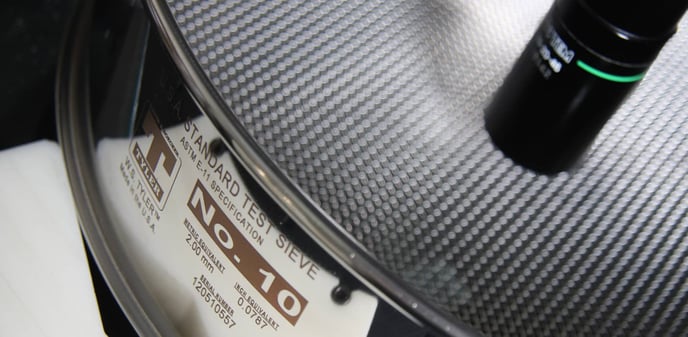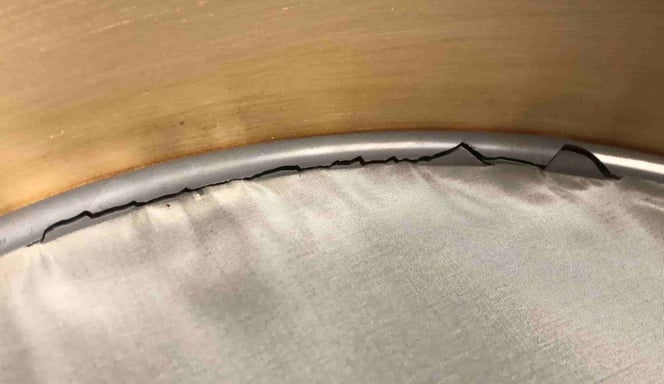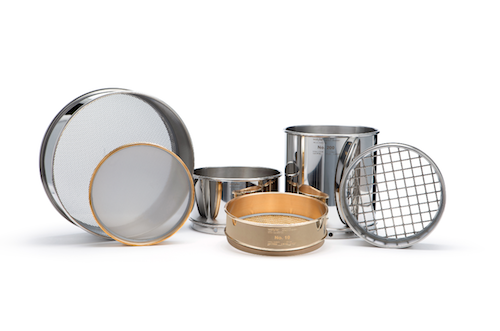Sieve Analysis Test Equipment: Are My Test Sieves in Spec?
Sieve analysis is a particle size analysis method that has been practiced for centuries to test the quality of various materials. Regardless of what industry you work in, the reliability of your sieve analysis results ultimately rests in the hands of dependable sieve analysis test equipment.
Test sieves, in particular, are possibly the most critical aspect of sieve analysis. The accuracy of your sieves will determine how well your particles are separated and how accurate your particle size distribution curve.
It's for this reason that you must be able to identify when your sieves fall out of spec.
W.S. Tyler is a prominent manufacturer of quality test sieves and understands that the room for error is minimal when it comes to test sieve tolerances.
To help you better identify a test sieve that is no longer performing in accordance to industry standards, the following article will cover:
- What it means when a test sieve falls out of spec
- Why your sieve(s) fall out of spec
- How to identify a test sieve that is no longer in spec
- How to address a sieve that has fallen out of spec
- How to prevent your sieve(s) from falling out of spec
What Does It Mean to Have a Test Sieve Fall Out of Spec?
When it comes to your test sieves being in or falling out of spec, it all has to do with the sieve analysis results you are getting. Your results should be repeatable for a long period of time.

Having a sieve fall out of spec refers to the occurrence in which the pore openings deviate from ASTM e11 sieve tolerances. This can either mean the openings have gotten bigger or smaller.
What Causes Test Sieves to Fall Out of Spec?
On finer mesh sieves, when you begin to see result variation, there is a good chance the pore openings of the sieve cloth have become clogged. Even if you take the proper maintenance precautions, particles have the tendency to accumulate on the wires.
This is particularly true when working with water-soluble materials like sugar.
Abrasive materials, like diamond dust, can also the wires of the sieve cloth to wear over time. This ultimately eats away at the sieve results in the sieve cloth openings becoming larger.
How Do You Determine if Your Sieve Falls Out of Spec?
The test sieve analysis results you yield are going to provide the most substantial insight into the state of your test sieves. If you begin to see your sieve analysis results change, such as your 10 micron mesh sieve not retaining the expected weight of sample material, your sieve has fallen out of spec.
Now, this refers back to the size of the sieve cloth's pore openings which can sometimes be hard to visually detect. Visually, if you see any tears or wrinkles in the sieve cloth, it's out of spec and should not be used.
Even if you see cracks in the epoxy, your test sieve is more than likely out of spec. This is because, even if the mesh appears to be properly tensioned, it's typically not as tight as it should be if the epoxy is compromised.

Plus, material can get trapped in that crack and affect your sieve analysis results.
NOTE: Having drum-tight sieve cloth is critical to accurate and repeatable results as any loss in tensioning can cause the material to bounce around aimlessly in the sieve and don't pass through the openings.
What Should You Do if Your Sieve Falls Out of Spec?
First things first, if your sieve falls out of spec, you'll need to replace it. Continuing to use faulty sieves will either cause too much or too little sample to be retained on the sieve, and your results won't accurately depict your production line.
You can send it in to be inspected to professionally determine if it's out of spec or not, but, again, if you start to see variations in your results, you should invest in a new sieve.
How Can You Prevent Your Test Sieves From Falling Out of Spec?
Test sieves are relatively durable, and you really have to try to cause any untimely wear and tear on the sieve cloth. Having said that, handling the test sieves in your sieve stack is proven to prolong their longevity and accuracy.
We've talked about tears, wrinkles, and cracked epoxy. While sieve cloth is made out of metal, you still want to be sure not to push anything sharp through it or aggressively clean it with an overly abrasive brush.
When it comes to testing your sample material, unfortunately, there isn't much that can be done about the material wearing down the mesh or clogging the pores over time.
Learn What to Expect With New Sieves
After prolonged use, test sieves are bound to fall out of spec. This can cause too much or too little sample material to move onto the next sieve in the test sieve stack.
Regardless, the integrity of the sieve is compromised, and the accuracy of your sieve analysis results is diminished.
Now, as stated in the article, when your sieve(s) fall out of spec, they must be replaced. That said, it's important to understand that new test sieves are going to produce slight changes in the results you yield.
As W.S. Tyler has worked within the world of test sieve analysis for over 140 years, we know what changes to expect when integrating new replacement sieves and strive to share this knowledge with you so you can prepare yourself.
With that, read the following article to learn exactly why new test sieves perform differently and what differences to expect:
About Ronnie Brown
Ronnie is the Content Writer for W.S. Tyler and has four years of experience as a professional writer. He strives to expand his knowledge on all things particle analysis and woven wire mesh to leverage his exceptional writing and graphic design skills, creating a one-of-a-kind experience for customers.




